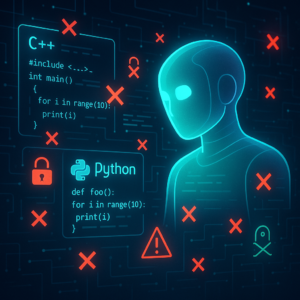Revolutionizing Data Visualization: Harnessing AI for Smarter Design Feedback

Revolutionizing Data Visualization: Harnessing AI for Smarter Design Feedback
In today’s fast-paced digital world, data visualization is more important than ever. Charts and graphs have become the lingua franca for sharing information. Although various tools have empowered everyone from novices to experts to create visualizations without writing code, the art of crafting an effective visualization involves more than just clicks and drags. Enter “Visualizationary”—an innovative tool that enlists artificial intelligence in the form of Large Language Models (LLMs) to offer personalized feedback to designers. This technology promises to be a game-changer in how we create and refine visual data presentations.
What is Visualizationary?
Created by researchers Sungbok Shin, Sanghyun Hong, and Niklas Elmqvist, Visualizationary is a web-based application that uses AI, specifically an off-the-shelf LLM, to provide automated feedback to visualization designers. The tool is built around a unique workflow known as ACGT: Analyze, Clarify, Guide, and Track. This approach aims to help designers from all skill levels, from novices just getting started to experts looking for an additional set of eyes on their projects.
ACGT: Behind the Buzzwords
Analyze
The first step in the ACGT framework is analyzing the current state of a visualization. Essentially, this means converting a snapshot of your chart into text using vision-language models (VLMs) and running it through a suite of “visualization filters.” These filters evaluate various perceptual features like color contrast, visual hierarchy, and layout consistency to generate an initial report.
Clarify
Once the analysis is complete, the ‘Clarify’ phase kicks in. The goal here is to make the metrics and technical lingo understandable for everyone, even those who are new to visualization design. Imagine an AI translator turning highly technical jargon into everyday language, revealing not only what the analyses found but why it matters for design improvement.
Guide
Armed with this newfound clarity, next comes the ‘Guide’ step. Using natural language, Visualizationary provides actionable recommendations, like pointing out that your visualization has poor color contrast that could be problematic for users with color blindness.
Track
Finally, the ‘Track’ phase helps you keep an eye on the evolution of your project. This component acts like a digital breadcrumb trail, monitoring the changes and improvements over time. This not only aids in iterative design but also helps in learning from past iterations.
Practical Applications: Real Goals, Real Benefits
So why does this matter? Visualizationary isn’t just about making pretty pictures; it’s about democratizing data literacy. Automated feedback can bring a multitude of benefits:
- Efficiency: Instant feedback allows for rapid iterations, helping you refine your design sooner rather than later.
- Consistency: Automated evaluations ensure that the criteria stay the same, eliminating subjective human biases.
- Scalability: The AI can process multiple designs simultaneously without breaking a sweat, a feat no single human could handle efficiently.
- Affordability: While human consultations can be pricey, Visualizationary offers an effective and budget-friendly alternative.
User Study: Testing the Waters
The proof, they say, is in the pudding—or, in this case, a user study involving 13 designers of varying expertise levels. The study revealed that even experienced designers found the feedback valuable, if somewhat overwhelming in textual form. Novice and intermediate users had more mixed results, showcasing the need for balance between feedback detail and user experience.
Challenges and Future Directions
While Visualizationary is an impressive step forward, it’s not without its limitations. Some LLM-generated feedback could be confusing or even counterproductive if not properly understood. Participants in the study sometimes found the sheer volume of textual feedback a bit overwhelming. Furthermore, while the tool is generally beneficial, its reliance on cloud-based LLMs raises privacy concerns. The future of this technology lies in refining these areas through more personalized and GDPR-compliant solutions.
Key Takeaways
- AI-Powered Feedback: Visualizationary leverages AI to provide actionable, real-time feedback for improving your visualizations.
- Powerful yet Balanced: While it offers efficiency, consistency, and scalability, users must understand its feedback to act effectively.
- Still Human-Dependent: While automation offers many benefits, human creativity and oversight are irreplaceable, especially for novice designers.
- Ongoing Development: Future iterations must refine feedback delivery and address privacy concerns to maximize the tool’s practical utility.
In conclusion, Visualizationary encapsulates the promise of AI in democratizing visualization design, offering new avenues for creativity and insight. It’s a reminder that while AI can be a powerful assistant, the keys to creativity still rest in human hands.
If you are looking to improve your prompting skills and haven’t already, check out our free Advanced Prompt Engineering course.
This blog post is based on the research article “Visualizationary: Automating Design Feedback for Visualization Designers using LLMs” by Authors: Sungbok Shin, Sanghyun Hong, Niklas Elmqvist. You can find the original article here.




